The disappearance of kelp forests in the oceans causes great damage to marine ecosystems and is becoming an increasingly serious threat around the world. One Japanese startup company tackling that problem is drawing international attention not only because of its efforts to restore oceans into vibrant ecosystems, but also for its value-creating business model.
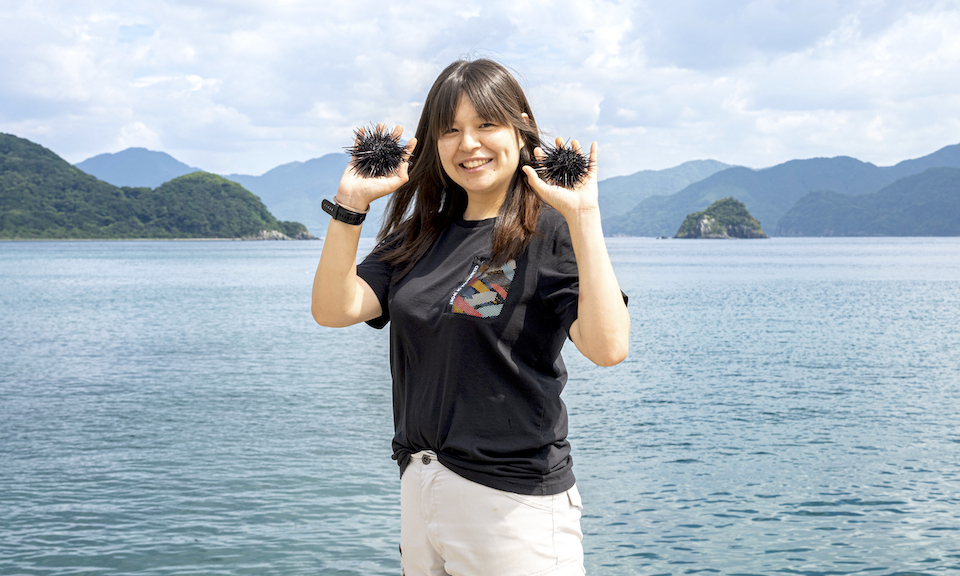
“When you look at sea urchins every day, you can tell whether they are feeling good or bad. I think that sea urchins are more straightforward than people,” says ARAI Miho, whose knowledge gained through many years of work on wastewater treatment is now devoted to sea urchins.
Sometimes called “nurseries of the sea,” kelp forests sustain a whole host of aquatic life. These rich seaweed forests have in recent years attracted attention as blue carbon ecosystems for their ability to capture and sequester carbon dioxide from seawater. However, barren seafloors, devoid of such fertile feeding and breeding grounds, have become a grave threat for oceans worldwide. One cause of that problem is sea urchins, uni, which, because of rising seawater temperatures from global warming and other factors, have been able to reproduce unhindered, leading to overgrazing on the kelp forests. Sea urchins are in increasing demand worldwide as a high-end ingredient in Japanese cuisine such as sushi, but those sea urchins that have overgrazed kelp forests down to the barren seafloor essentially starve and become empty. Since there is nothing to eat inside them, they have no commercial value and were previously simply discarded.
While many people involved in the fishing industry have been left scratching their heads, the circular business model of the Japan-based startup Urchinomics is a ray of hope to solve that problem. Urchinomics engages with fishers to procure empty sea urchins, cultivate them through ranching on a short-term basis, and ship them to restaurants and sushi chains throughout the year as valuable marine products.
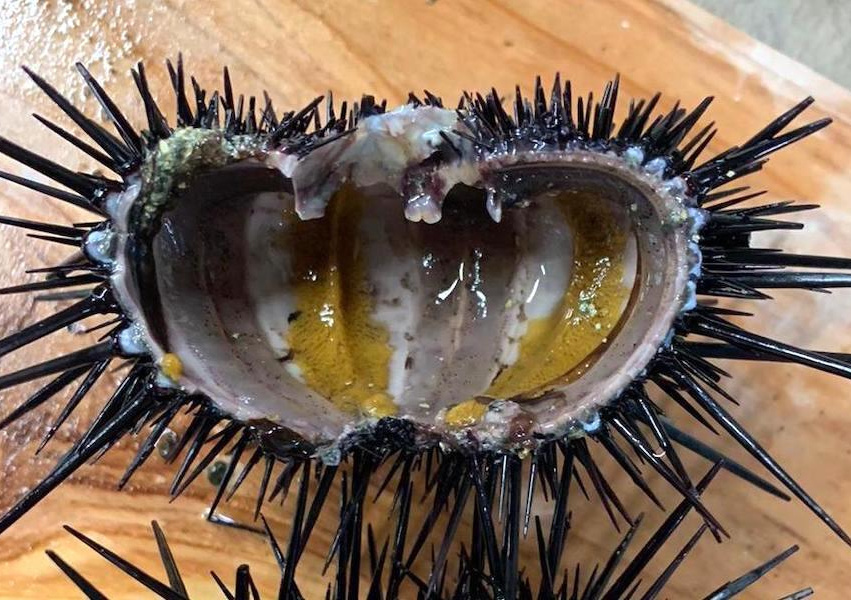
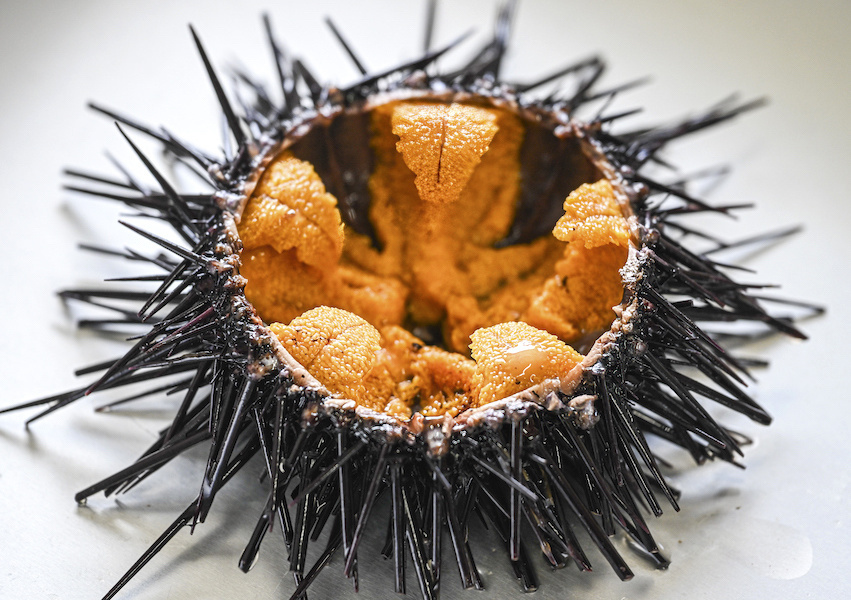
Left: “Zombie” urchin—empty sea urchins are almost devoid of anything edible.
Right: Sea urchins farmed at the Kayoi Uni Base just before being shipped. These sea urchins are filled with plump roe and shipped as premium seafood.
Top: “Zombie” urchin—empty sea urchins are almost devoid of anything edible.
Bottom: Sea urchins farmed at the Kayoi Uni Base just before being shipped. These sea urchins are filled with plump roe and shipped as premium seafood.
A catalyst for that model was the Great East Japan Earthquake of 2011. Along the Tohoku coastline, sea urchins appeared prolifically due to changes in the marine environment caused by the tsunami. The proliferation of sea urchins led to wider desolation on the seabed. Aware of the current plight, a project began with the help of Norwegian technology, which had been used to conduct advanced research in sea urchin farming. Urchinomics was established in 2017, leading to the world’s first sea urchin farm being set up in Oita Prefecture in 2021. Initiatives such as that—namely, those that treat environmental issues as a business and which can help create jobs for the local community—are increasingly in the spotlight.
Urchinomics’ second facility in Japan, Kayoi Uni Base, was created in 2022 in Yamaguchi Prefecture. Built in collaboration with a local seafood processing company, the huge farm has an annual production capacity of 34 tons, making it the largest sea urchin ranch in the world. At the heart of the sea urchin farm is a unique compound feed made primarily from the offcuts of kombu kelp (harvested sustainably), and an efficient ranching system designed specifically for breeding sea urchins on land. Coupled with that is expertise in knowing how to reliably ship sea urchins without exposing them to the natural environment during their breeding period of two to three months.
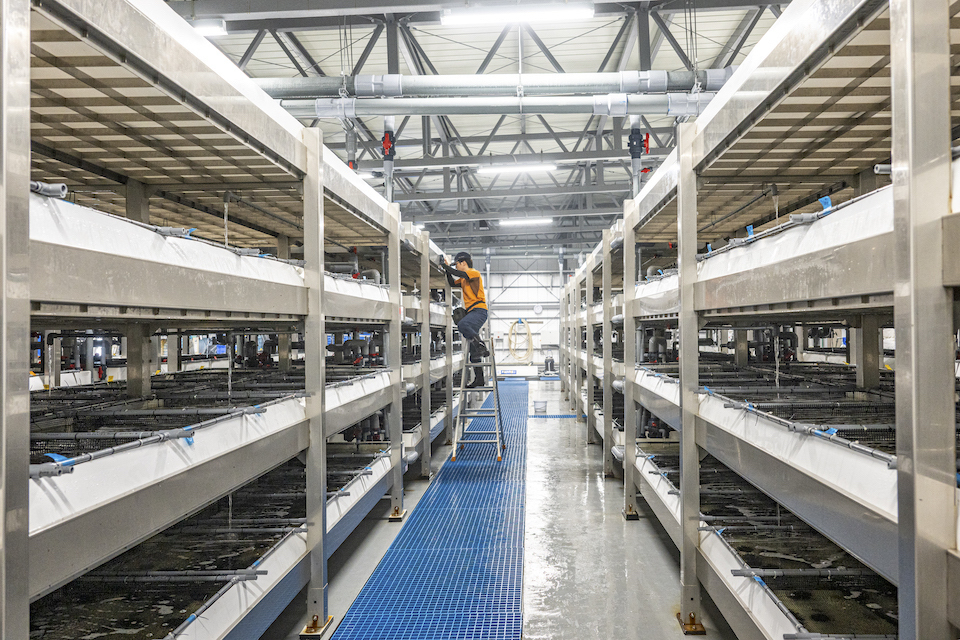
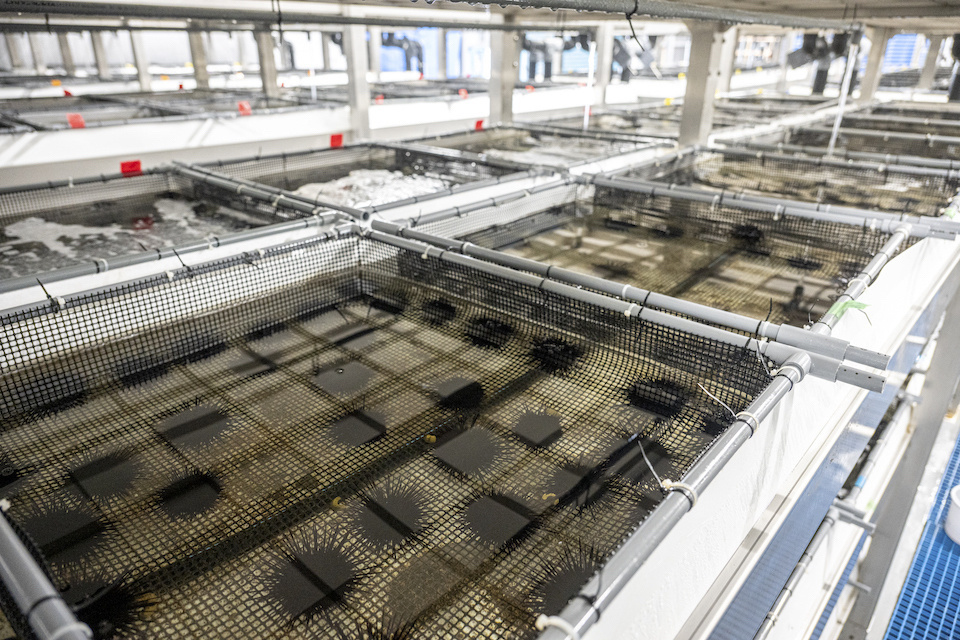
There are about 200 tanks in the ranching facility where water suitable for sea urchins is processed through a closed circulation system called the Recirculating Aquaculture System.
ARAI Miho, a water treatment specialist and plant engineer, says, “There are still many things we don’t know about sea urchins. Focusing solely on levels of water quality will not produce high-quality sea urchins full of roe. It's a daily process of trial and error. Yet, the quality of the sea urchins we can ship from our farms is the key to our circular business, so I feel a great sense of satisfaction.”
Urchinomics was endorsed for its exemplary innovation in the United Nations Decade of Ocean Science for Sustainable Development in 2022. And through its kelp restoration efforts from 2021 to 2022 to remove empty sea urchins, Urchinomics secured blue carbon credits equivalent to 2.6 tons of sequestered carbon. That had only previously been done with mangroves overseas, but now Japan, blessed by waters on all sides, is the first country in the world to obtain blue carbon credits from kelp forests.
Today, demonstration experiments are underway not only in Japan but also in the United States, Canada, New Zealand and other countries where there is much interest from fisheries. The goal of Urchinomics is to roll out the sea urchin ranching business to all regions that suffer from overgrazed, desolate seafloors, helping to restore the rich and vibrant nurseries of the sea. With passion and technology, the challenge for Urchinomics rolls on.






























